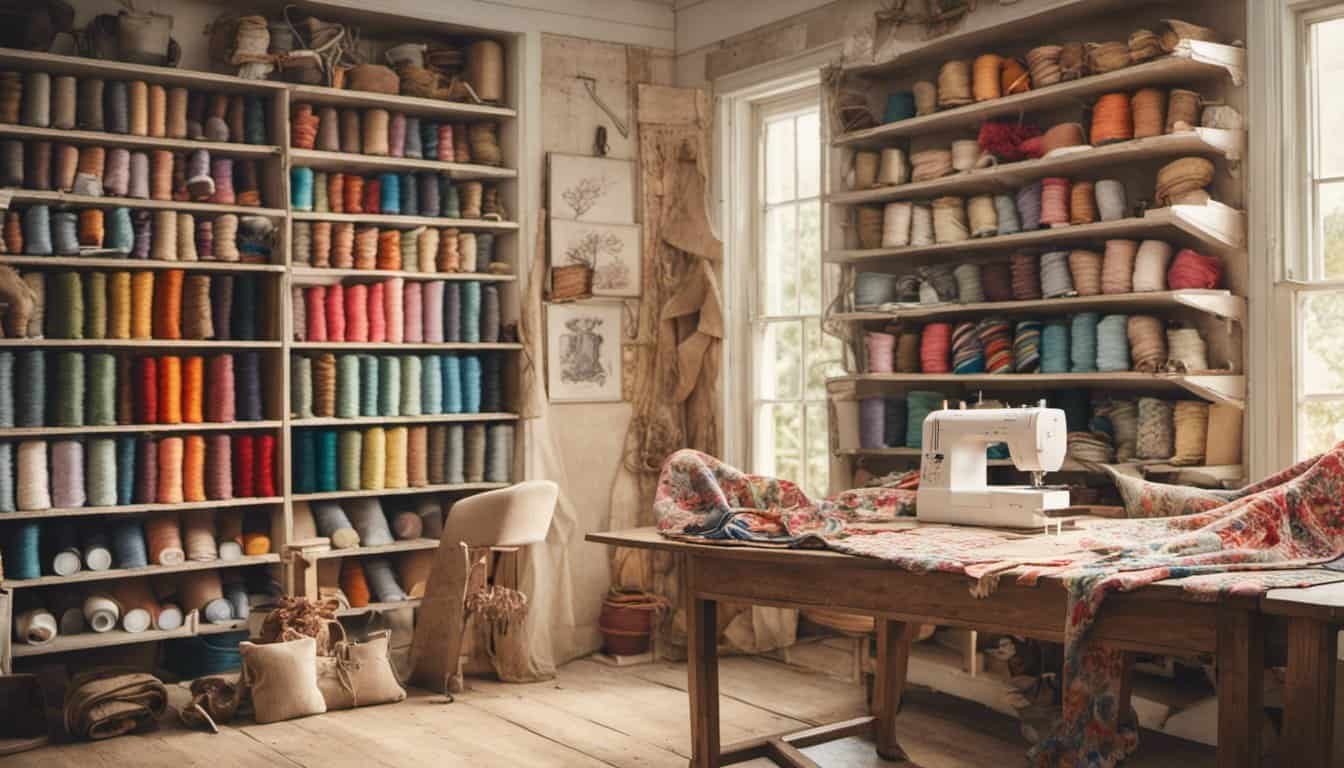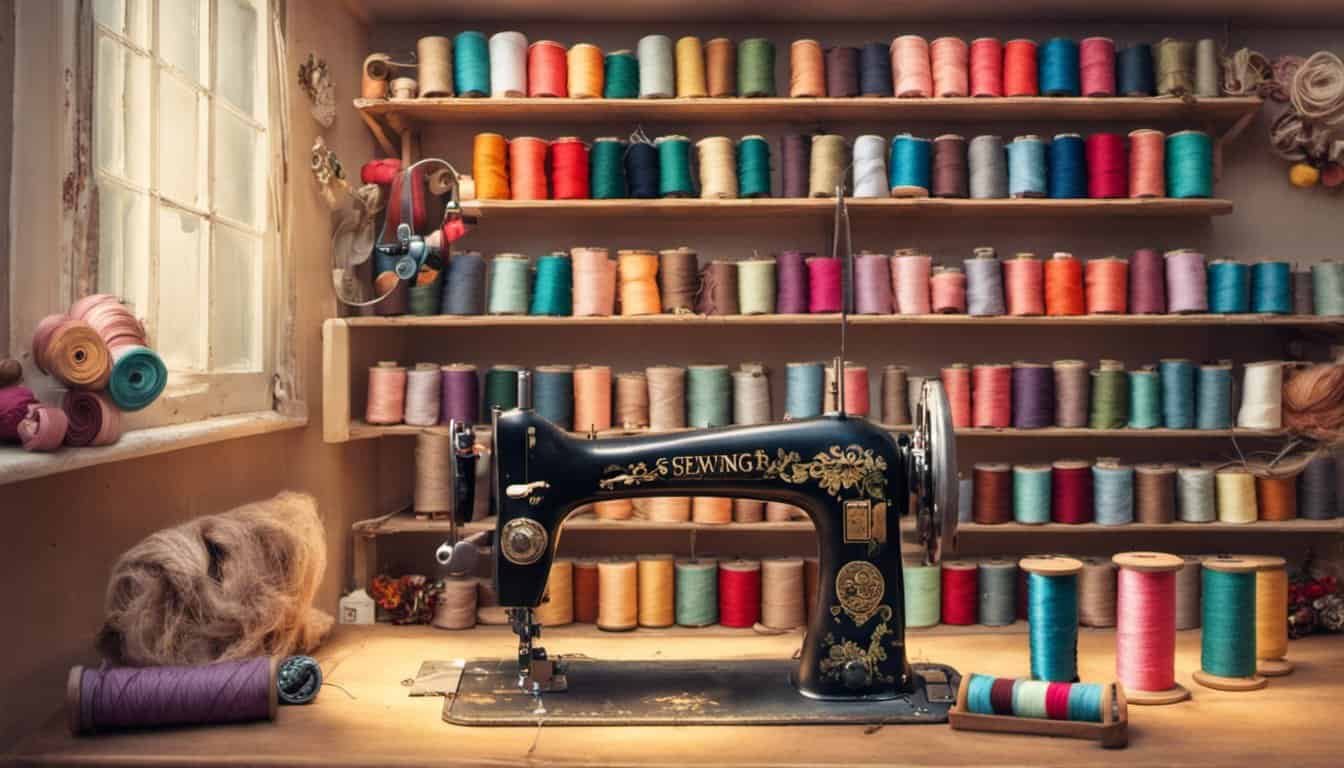Ever been in the middle of a sewing project only to have your machine come to a sudden halt? It can be frustrating when a jam interrupts your creative flow. But don’t worry—you’re not alone, and fixing common sewing machine jams is easier than you might think.
Whether you’re a seasoned sewist or just starting out, understanding the basics of troubleshooting can save you time and prevent future hiccups. From tangled threads to misplaced needles, this guide will help you get your machine running smoothly again so you can focus on what you love most: creating beautiful projects.
Common Causes Of Sewing Machine Jams
Understanding the reasons behind sewing machine jams helps you prevent and address issues efficiently. Here are the most common causes:
- Thread Tangles
Improper threading leads to knots and tangles. Ensure the machine is threaded correctly, following the manufacturer’s instructions.
- Misaligned Needle
A bent or incorrectly inserted needle disrupts fabric and thread flow. Inspect the needle for damage and confirm it’s securely placed.
- Incompatible Thread
Using the wrong type or thickness of thread increases the risk of jams. Select thread recommended for your machine and project.
- Dirty Machine
Accumulated lint and debris block the movement of parts. Regularly clean the machine, focusing on the bobbin area and feed dogs.
- Incorrect Tension Settings
Improper tension causes threads to pull unevenly, leading to jams. Adjust the tension according to your fabric and thread type.
- Worn Out Parts
Components like the needle bar or feed dogs wear down over time. Replace worn parts promptly to maintain smooth operation.
- Poor Machine Maintenance
Lack of routine maintenance hinders performance. Schedule regular check-ups and oil your machine as recommended.
By addressing these common causes, you can minimize sewing machine jams and ensure a seamless stitching experience.
Identifying The Type Of Jam
Diagnosing the jam type allows you to address the issue accurately. Focus on the following common jam categories.
Thread Tangles
Thread tangles interrupt your sewing by causing threads to knot or loop. Examine the upper and lower threads for knots or snags. Ensure proper threading by carefully following your machine’s threading path. Select threads suited for your fabric to reduce friction and prevent overlapping. Keep the bobbin area clean to avoid thread accumulation. If tangles persist, verify your tension settings are balanced to maintain smooth thread flow.
Needle Problems
Needle problems often lead to stalled machines and uneven stitching. Check the needle for bends, dull edges, or damage; replace it if any issues are found. Use a needle that matches your fabric type and weight to ensure compatibility. Insert the needle correctly, ensuring it locks firmly in place. Tighten the needle to secure it and prevent shifting during sewing. Change needles regularly, especially after extensive use or when switching fabric types, to maintain consistent performance.

Step-By-Step Troubleshooting
Follow these steps to resolve common sewing machine jams efficiently.
Removing The Jammed Threads
- Turn Off and Unplug your sewing machine to ensure safety.
- Lift the Needle to its highest position using the handwheel.
- Remove the Needle by loosening the needle clamp screw with a screwdriver.
- Gently Pull Out any visible jammed threads from the needle and bobbin area.
- Inspect the Feed Dogs for tangled threads and remove any obstructions.
- Reinsert the Needle correctly, ensuring it points forward.
- Test the Machine with a scrap fabric to confirm the jam is cleared.
Checking The Bobbin Area
- Open the Bobbin Case cover to access the bobbin area.
- Remove the Bobbin and empty any thread remnants.
- Clean the Bobbin Area using a small brush to eliminate lint and debris.
- Verify the Bobbin is Inserted Correctly, ensuring it rotates in the right direction.
- Check for Damaged Parts, such as broken bobbin housings or gears, and replace if necessary.
- Reassemble the Bobbin Area, making sure all components are securely in place.
- Run a Test Stitch to ensure the bobbin functions smoothly without causing jams.
Preventing Future Sewing Machine Jams
Maintaining your sewing machine reduces the likelihood of future jams. Implement these strategies to ensure smooth operation.
Proper Threading
Ensure threads follow the machine’s threading path accurately. Misthreading increases the chance of tangles and jams. Refer to your machine’s manual for the correct threading diagram.
Use the Correct Needle and Thread
Select needles and threads suitable for your fabric type. For example, use a universal needle for cotton and a stretch needle for knit fabrics. Incompatible combinations can cause stitching issues and machine jams.
Regular Cleaning and Maintenance
Clean your machine after each use to prevent lint and debris buildup. Use a small brush to remove particles from the bobbin area and feed dogs. Regularly oil the machine as recommended by the manufacturer to maintain optimal performance.
Adjust Tension Settings
« Unveiling Sewing in the Renaissance: Historical Insights That Will Blow Your Mind
10 Seasonal Color Palettes for Sewing Projects You Absolutely Must Try »
Set the thread tension according to your project requirements. Incorrect tension can lead to uneven stitches and thread breaks. Test tension settings on a scrap fabric before starting your project to ensure adjustments are accurate.
Use High-Quality Supplies
Invest in high-quality threads and needles to minimize the risk of jams. Poor-quality supplies often contain impurities or inconsistent thickness, which can disrupt the sewing process and cause mechanical issues.
Store Your Machine Properly
Keep your sewing machine in a clean, dry environment when not in use. Use a dust cover to protect it from dust and debris. Proper storage prevents accumulation of particles that can interfere with machine components.
Avoid Overloading the Machine
Do not force fabric through the machine. Feeding too much fabric at once can strain the machine and lead to jams. Guide the fabric gently and let the machine pull it through at its own pace.
Regular Professional Servicing
Schedule periodic maintenance checks with a professional technician. Regular servicing ensures all parts function correctly and addresses potential issues before they cause jams.

By following these preventive measures, you can enhance your sewing machine’s longevity and enjoy uninterrupted sewing sessions.
When To Seek Professional Assistance
Even after thorough troubleshooting, some sewing machine issues require expert attention. Recognizing these situations ensures your machine remains in optimal condition.
- Persistent Jams
Continual thread blockages indicate underlying mechanical problems that standard fixes can’t resolve.
- Unusual Noises
Grinding, clicking, or squeaking sounds suggest internal component wear or damage needing professional diagnosis.
- Electrical Malfunctions
Power issues, erratic behavior, or failure to operate indicate potential electrical faults requiring specialized repairs.

- Frequent Thread Breaks
Consistent thread snapping despite correct threading points to tension or needle problems beyond basic adjustments.
- Damaged Components
Bent needles, broken gears, or faulty parts compromise machine functionality and necessitate expert replacement.
- Software Errors
Digital models experiencing firmware glitches or display issues benefit from technician intervention to avoid further complications.
- Regular Maintenance Requirements
Scheduling professional servicing ensures comprehensive cleaning and lubrication, preventing future jams and extending machine lifespan.
Seeking professional assistance in these scenarios maintains your sewing machine’s reliability and performance, allowing you to focus on your creative projects.

Conclusion
Jamming your sewing machine doesn’t have to halt your creativity. With the right steps, you can quickly get back to stitching your projects. Remember to keep your machine clean and use the correct tools to prevent future issues. Trust your skills and the knowledge you’ve gained to handle any hiccups along the way. Happy sewing!

















